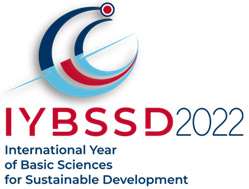CoCr$_{2}$O$_{4}$ is a ferrimagnetic material with a cubic Fd$_{3}$m space group belonging to a normal spinel structure attributed to the large octahedral ligand field stabilization energy of Cr$^{3+}$[1]. These spinels belong to a class of mixed oxides in which the Co$^{2+}$ ions occupy the tetrahedral A sites and the Cr$^{3+}$ ions occupy all of the octahedral B sites with the general formula AB$_{2}$O$_{4}$ [2]. Previous studies on spinel compounds have indicated that the Jahn-Teller (JT) effect is responsible for a structural distortion due to the presence of the Ni$^{2+}$ and Cu$^{2}$+ ions at tetrahedral sites. This distortion is caused by the elimination of the orbital degeneracy, resulting in an ordering of the d orbitals and a lowering of the crystal lattice symmetry [3, 4, 5]. In the present work Cu‐substituted cobalt (Co$_{(1−x)}$Cu$_{x}$ Cr$_{2}$O$_{4}$, with x=0.10, 0.50, and 0.90) nanoparticles were synthesized by sol-gel [6] method and calcined at 500 °C. Rietveld refinement of the powder x-ray diffraction (XRD) patterns confirm that the structure is dependent on x, changing from cubic for Co$_{0.90}$Cu$_{0.10}$Cr$_{2}$O$_{4}$, to a mixture of cubic and tetragonal for Co$_{0.50}$Cu$_{0.50}$Cr$_{2}$O$_{4}$, and pure tetragonal for Co$_{0.10}$Cu$_{0.90}$Cr$_{2}$O$_{4}$. This is in agreement with what is expected considering the structures observed in CoCr$_{2}$O$_{4}$ and CuCr$_{2}$O$_{4}$ [7, 8]. The crystallite size (D) was found to be 8±2 nm (Co$_{0.90}$Cu$_{0.10}$Cr$_{2}$O$_{4}$), 9±2nm (Co$_{0.50}$Cu$_{0.50}$Cr$_{2}$O$_{4}$) and 8±2 nm (Co$_{0.10}$Cu$_{0.90}$Cr$_{2}$O$_{4}$), respectively. The size distribution and morphology of the nanoparticles were determined using transmission electron microscopy. The particle sizes of 10±2 nm (Co$_{0.90}$Cu$_{0.10}$Cr$_{2}$O$_{4}$), 8±2 nm (Co$_{0.50}$Cu$_{0.50}$Cr$_{2}$O$_{4}$), and 26±2 nm (Co$_{0.10}$Cu$_{0.90}$Cr$_{2}$O$_{4}$), respectively, was obtained from the TEM. Magnetic properties of the synthesized nanoparticles were studied using a vibrating sample magnetometer. The ZFC and FC curve results show that the two different magnetic phase transitions at T$_{C}$ = 94 K associated with long-range ferrimagnetic order, while at T$_{S}$ = 26 K, a spiral magnetic structure is observed [9]. T$_{S}$ is suppressed for the Co$_{0.50}$Cu$_{0.50}$Cr$_{2}$O$_{4}$ sample because of the cubic to tetragonal structural phase transition. The magnetization as a function of applied field measurements, $M(\mu_0H)$, of Cu-doped CoCr$_{2}$O$_{4}$ nanoparticles indicate that the magnetic properties change from ferrimagnetic to paramagnetic behaviour [10]. The magnetic saturation ($M_{s}$), remanence ($M_{r}$), and coercivity ($H_{c}$) of the samples were obtained from the results of $M(\mu_0H)$ and will be discussed.
References:
1. Tsurkan et al., 2018, Condensed Matter Material Science, 5605, 1-5.
2. Nadeem et al., 2020, Journal of Alloys and Compounds, 832, 155031.
3. Wang et al., 2019, Applied Physics letters, 115, 082903.
4. Mohanty et al., 2021, AIP advances, 11, 025113.
5. Ghosh et al., 2021, Material Science and Engineering B, 263, 114864.
6. Arshada et al., 2011, Journal of Alloys and Compounds, 509, 8378–8381.
7. Akyola et al., 2017, Physica B, 525, 144-148.
8. Paul et al., 2015, Journal of Alloys and Compounds, 648, 629-635.
9. Dutta et al., 2009, Journal of Applied Physics, 106, 043915.
10. Gingasu et al., 2015, Materials Research Bulletin, 62, 52–64.



